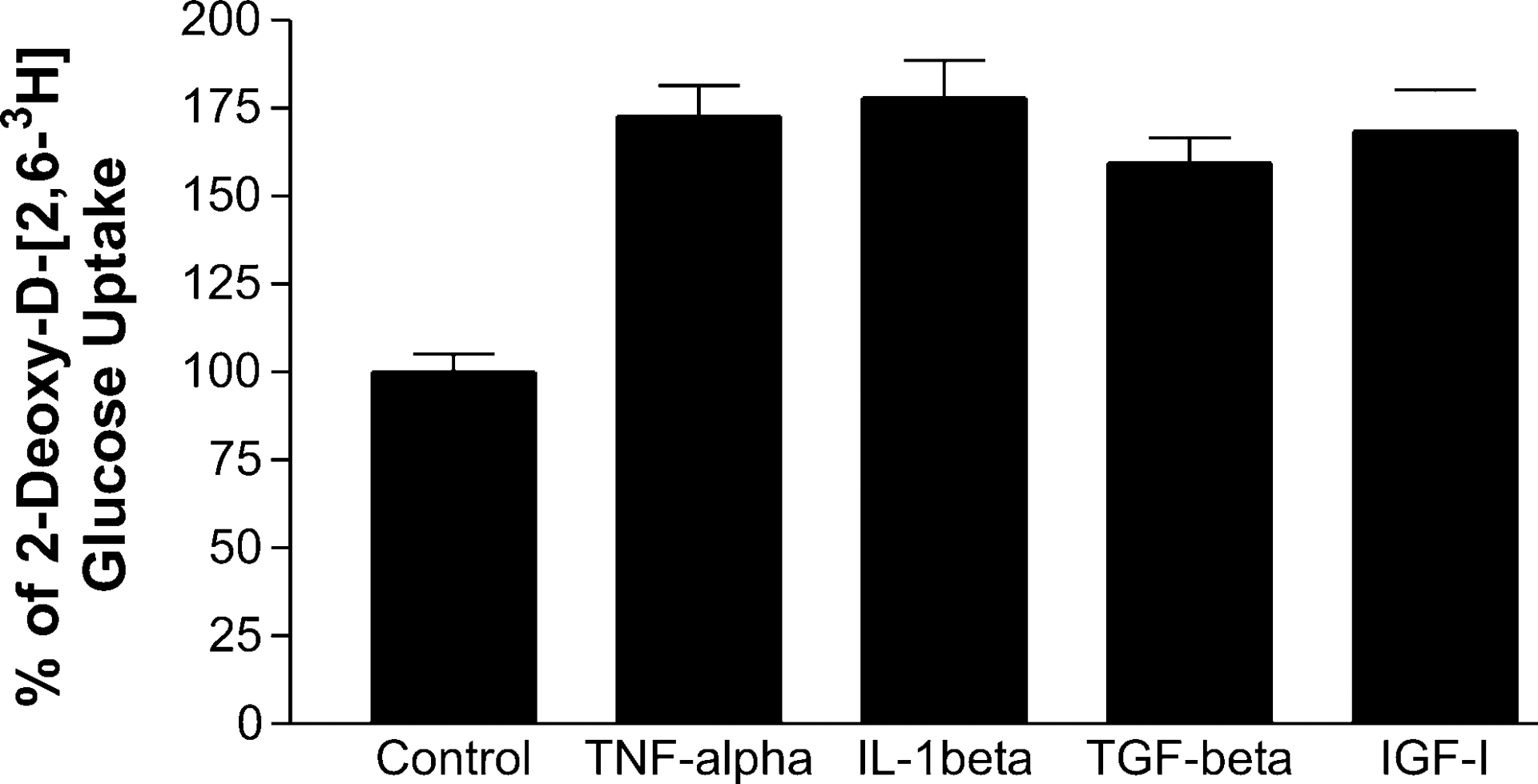Glucose serves as the major energy substrate for articular chondrocytes and the main precursor for the synthesis of extracellular matrix glycosaminoglycans in cartilage (Mobasheri et al. 2002a). Recent evidence suggests that articular chondrocytes express several facilitative glucose transporter (GLUT) isoforms (Mobasheri et al. 2002b) and also that 2-deoxyglucose transport is stimulated by cytokines (Shikhman et al. 2001). The aim of this investigation was to determine the effects of endocrine and cytokine factors on the capacity of equine articular chondrocytes for transporting 2-deoxyglucose and on the expression levels of GLUT1 and GLUT3.
Glucose transport into equine articular chondrocytes isolated using established procedures (from abattoir material) was determined by measuring the uptake of non-metabolizable 2-deoxy-D-[2,6-3H]glucose in the presence and absence of glucose transport inhibitors (0.2 mM phloretin and 10 µM cytochalasin B) for a period 35 min at 20°C. Additional 2-deoxyglucose uptake experiments were performed with alginate encapsulated chondrocytes stimulated for 24 h with TNF-α (100 ng ml-1), IL-1β (100 ng ml-1), IGF-I (20 ng ml-1) and TGF-β 20 ng ml-1). Glucose uptake was normalized to total cell protein content using a Bio-Rad detergent-compatible (DC) protein assay. Western blotting was used to compare GLUT1 and GLUT3 expression levels of stimulated and unstimulated chondrocytes.
Results indicated that 2-deoxyglucose uptake was inhibited by up to 95 % in the presence of cytochalasin B and/or phloretin, which suggests that glucose uptake into equine chondrocytes, is GLUT mediated. Treatment with IGF-I, TGF-β, IL-1β and TNF-α resulted in a significant increase (over 65 %) in 2-deoxyglucose uptake compared to control values (Fig. 1). Short- and long-term administration of insulin (15 min and 24 h, respectively) did not increase glucose uptake ruling out a functional role for insulin-sensitive GLUT4-mediated glucose transport. GLUT1 and GLUT3 protein levels were found to be increased in chondrocytes stimulated with growth factors and cytokines.
The data presented support a critical role for glucose transport and metabolism in the synthesis and degradation of cartilage. Accelerated glucose transport via several GLUT isoforms represents a component of chondrocyte responses to both catabolic, pro-inflammatory cytokines and anabolic endocrine factors.
We are grateful to the University Hospital of the Canaries and the Department of Pharmacology and Experimental Therapeutics, University of Liverpool for supporting this work.

